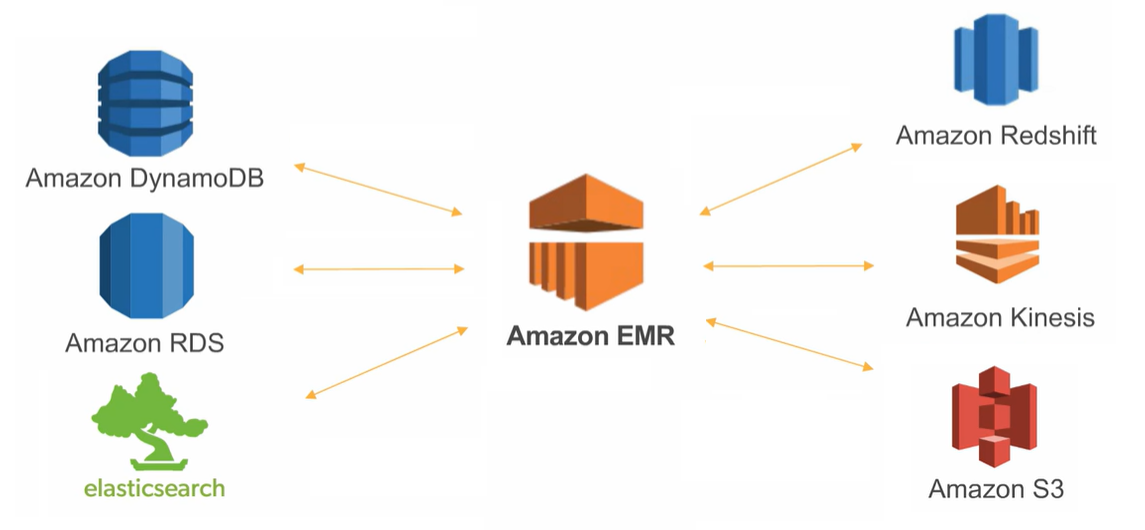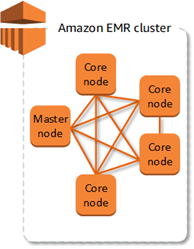Amazon Elastic MapReduce
 Satish Sutar
Satish Sutar
Amazon EMR provides a managed Hadoop framework that makes it easy, fast, and cost-effective to process vast amounts of data using EC2 instances. When using Amazon EMR, you don’t need to worry about installing, upgrading, and maintaining Spark software (or any other tool from the Hadoop framework). You also don’t need to worry about installing and maintaining underlying hardware or operating systems. Instead, you can focus on your business applications and use Amazon EMR to remove the undifferentiated heavy lifting.
The central component of Amazon EMR is the cluster. A cluster is a collection of Amazon Elastic Compute Cloud (Amazon EC2) instances. Each instance in the cluster is called a node. Each node has a role within the cluster, referred to as the node type. Amazon EMR also installs different software components on each node type, giving each node a role in a distributed application like Apache Hadoop.

The node types in Amazon EMR are as follows:
Master node: A node that manages the cluster by running software components to coordinate the distribution of data and tasks among other nodes for processing. The master node tracks the status of tasks and monitors the health of the cluster. Every cluster has a master node, and it’s possible to create a single-node cluster with only the master node.
Core node: A node with software components that run tasks and store data in the Hadoop Distributed File System (HDFS) on your cluster. Multi-node clusters have at least one core node. Task node: A node with software components that only runs tasks and does not store data in HDFS. Task nodes are optional.
For optimizing costs and performance in choosing the instance types:
Master node: Unless your cluster is very short-lived and the runs are cost-driven, avoid running your Master node on a Spot Instance. We suggest this because a Spot interruption on the Master node terminates the entire cluster. Alternatively, to On-Demand, you can set up the Master node on a Spot Block. You do so by setting the defined duration of the node and failing over to On-Demand if the Spot Block capacity is unavailable.
Core nodes: Avoid using Spot Instances for Core nodes if the jobs on the cluster use HDFS. That prevents a situation where Spot interruptions cause data loss for data that was written to the HDFS volumes on the instances.
Task nodes: Use Spot Instances for your task nodes by selecting up to five instance types that match your hardware requirement. Amazon EMR fulfills the most suitable capacity by price and capacity availability.
Subscribe to my newsletter
Read articles from Satish Sutar directly inside your inbox. Subscribe to the newsletter, and don't miss out.
Written by

Satish Sutar
Satish Sutar
Experienced IT Professional with hands-on business experience in managing cloud-based technology and effectively handling configuration & deployment of infrastructure & services.